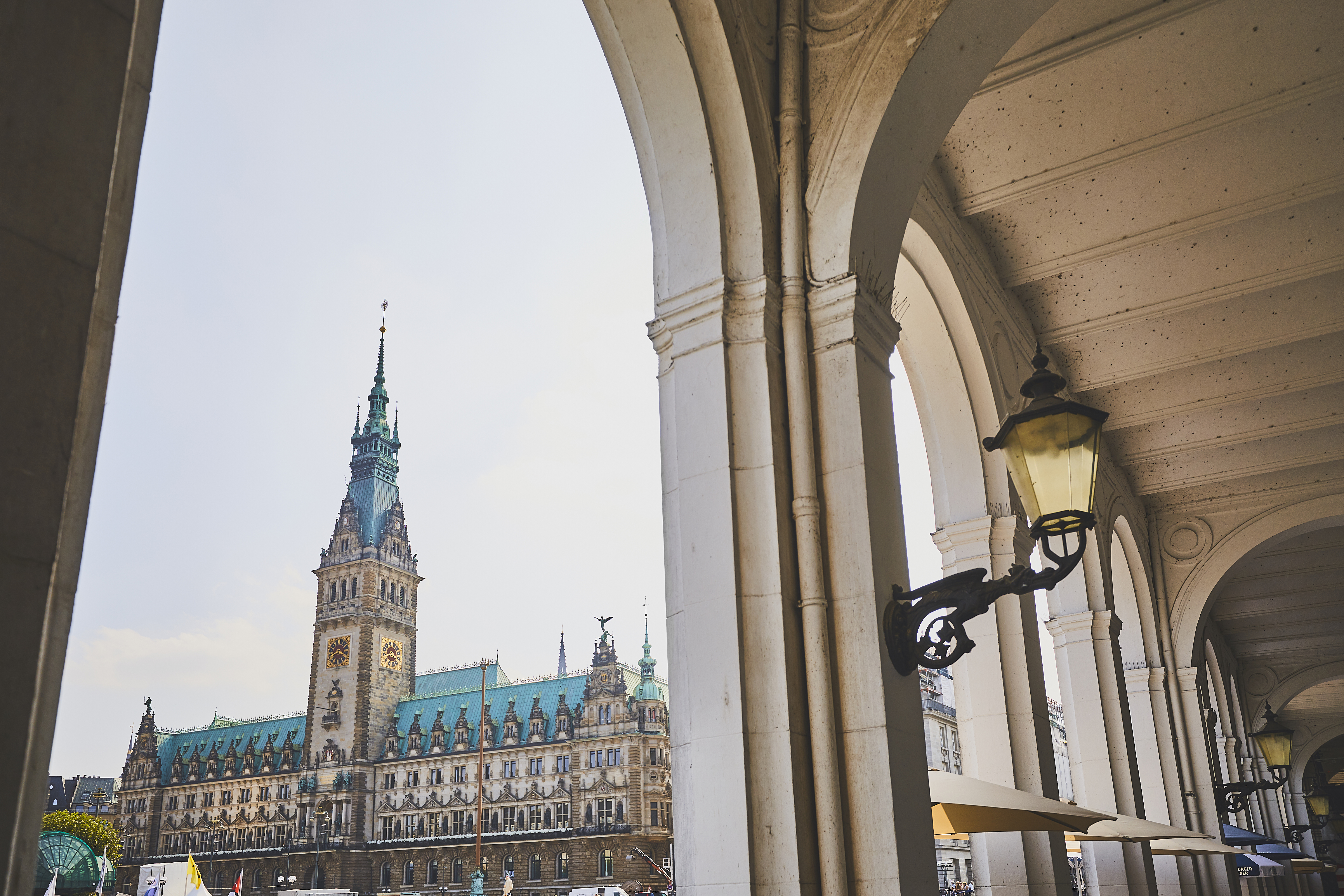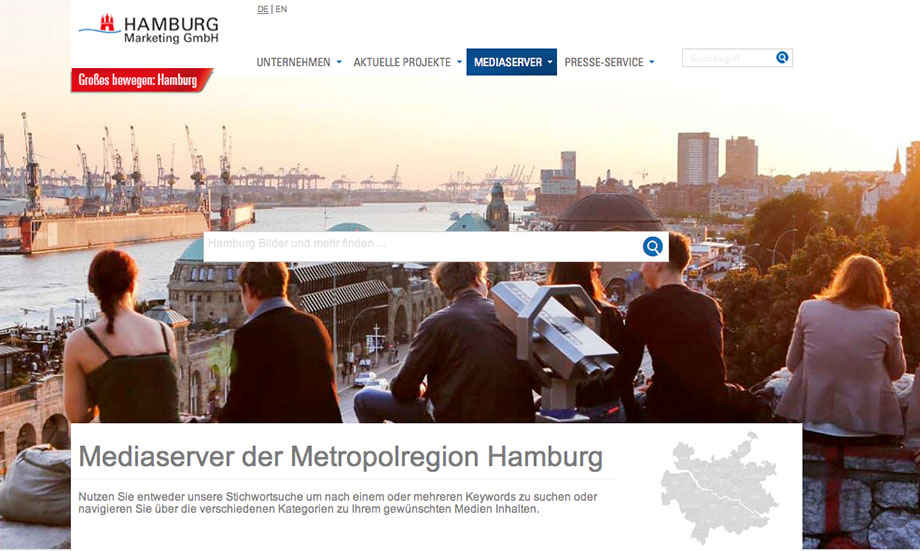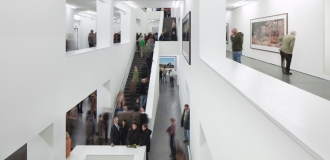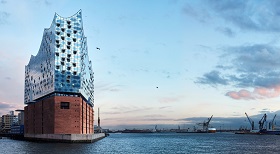Hamburg offers exciting contrasts to the lovers of architecture. Postmodern glass and steel facades, upper-class mansions of bygone centuries, streets with beautiful Art Nouveau buildings, baroque churches, historic residential districts, but also outstanding individual buildings determine the face of Hamburg.
For over a century, Hamburg has been renowned for its bold urban planning. Striking architectural designs such as the Chilehaus, dating from the 1920s, or today’s HafenCity Hamburg are setting the bar for living and working in a large city. Much has been done in recent years to make the city centre between the Alster and the port even more inviting. In the 1970s, the first spacious shopping arcades were built there. Today, the new Europa-Passage and the new layout for Jungfernstieg reflect this spirit. Renowned architect’s offices such as Bothe Richter Teherani or gmp von Gerkan, Marg und Partner are but two representatives of Hamburg’s ambitious architectural scene – of a kind impossible to find elsewhere in Germany and Europe.
Architectural “string of pearls” and the Elbe banks
In recent years, an attractive ensemble of buildings has been port between St Pauli and Oevelgönne, comprising offices, apartments, restaurants and shops. Along the 100 metre wide riverbank that runs for several kilometres, converted former port buildings alternate with unconventional new buildings. Working and living with a view of passing container ships is no longer the privilege of those born and bred in Blankenese. This string of architectural pearls reflects the city’s affection for the water and is attracting more and more tourists. One outstanding example of spectacular waterside architecture is Hadi Teherani’s “Docklands” office creation at Van-der-Smissen-Strasse.
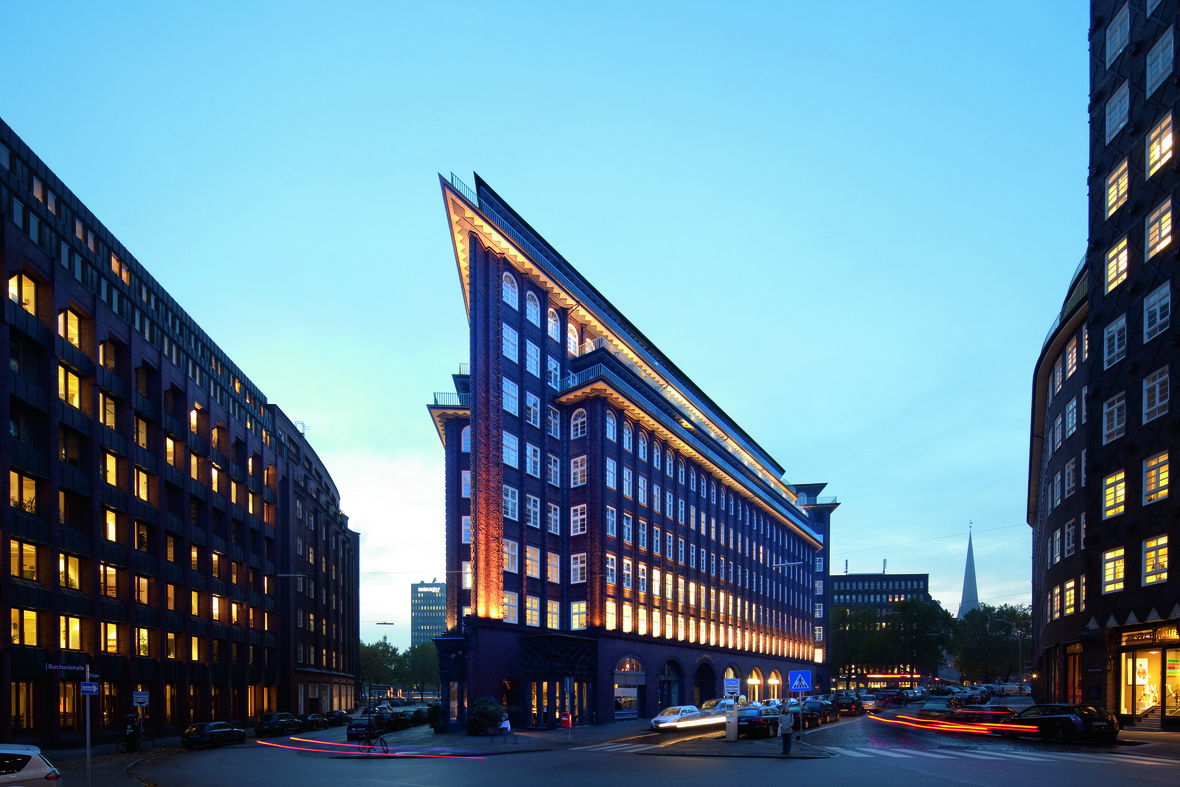
Architectural history in the Kontorhaus district
The Kontorhaus district, located at Messberg in the south of Hamburg’s old town, has entered architectural history as the first district on the European continent designed purely for office usage. Created in the 1920s and 1930s by Fritz Schumacher, the three most striking buildings are the Chilehaus, Messberghof and Sprinkenhof. These buildings rank among the major artistic monuments of their time, and they are all protected buildings. Reminiscent of a ship’s bow, the Chilehaus is regarded as the most significant artistic achievement of German Brick Expressionism. This extraordinary building heavily influenced Northern European brick architecture in the 1920s and 1930s and is one of Germany’s first skyscrapers. The Speicherstadt and the Kontorhaus district with the Chilehaus have been nominated for the UNESCO World Heritage list.
Elbphilharmonie Hamburg
A bold glass structure is rising above the historic Kaispeicher A, a monumental redbrick block at the western tip of HafenCity Hamburg. An architectural vision has become reality – the Elbphilharmonie concert hall is Hamburg’s new cultural landmark. The design by Swiss star architects Herzog & de Meuron combines tradition and modernity just where the Hanseatic city is at its most authentic: directly on the water and in the heart of the city. This is where one of the world’s finest concert venues has been built. The Elbphilharmonie opened its doors in January 2017 as one of the world’s finest concert halls.
